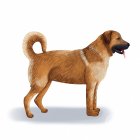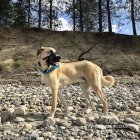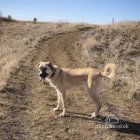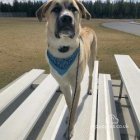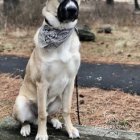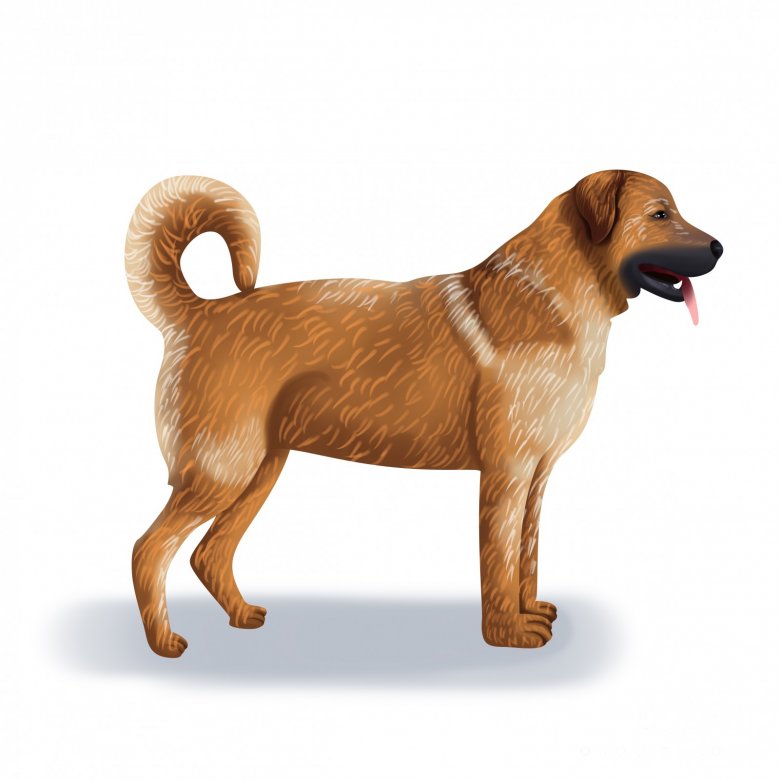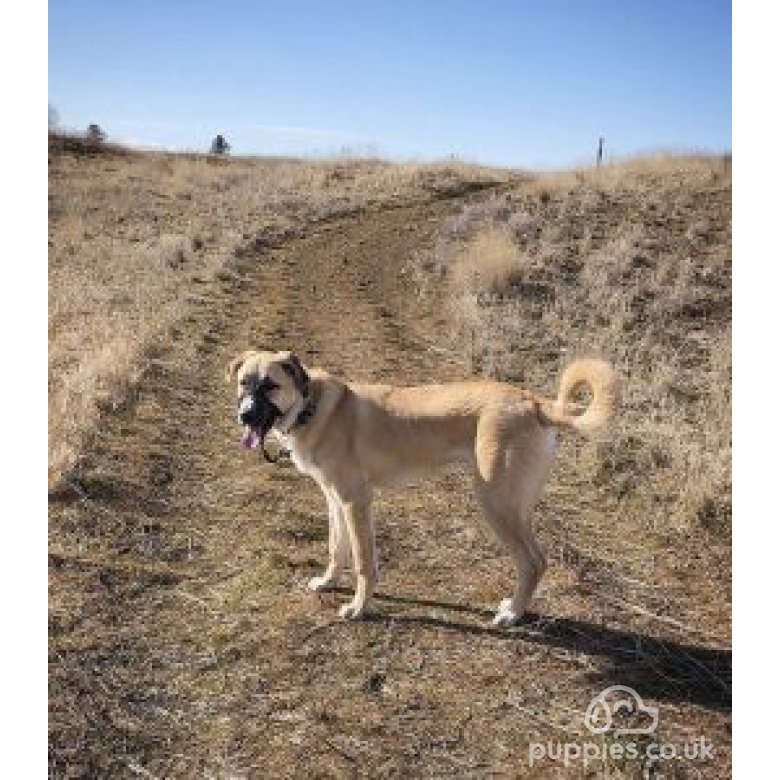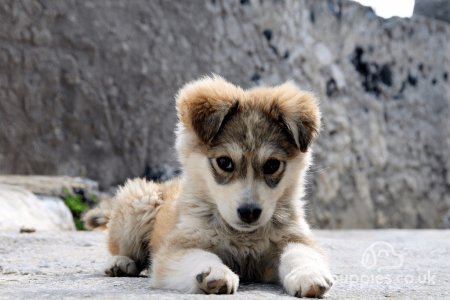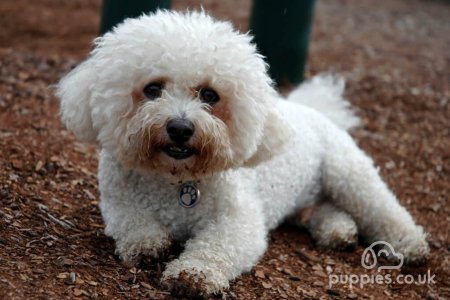Anatolia was the home of ancient civilisations that have waxed and waned with the passing of the epochs, but the Anatolian Shepherd dog is an old breed that has withstood the test of time. Few breeds can boast the longevity of this proud and confident ancient pastoral breed from Anatolia (modern-day eastern Turkey). These large dogs were used for millennia as powerful guardians and shepherds of livestock, but have adapted well to the modern household and make for loyal and protective companions to the very end. As puppies, they’re incredibly cute but will quickly grow into courageous guardians of the home. Whether for their appearance, temperament, or a combination of both, Anatolian Shepherd Dogs are wonderful companions with many great qualities.
Why Anatolian Shepherd Dogs are Great
Some highlights of Anatolian Shepherd Dogs:
Protective: old habits die hard, but in the case of the Anatolian Shepherd Dog, their inclination to protect the home and the family are unmatched by most other breeds.
Pet-friendly: generally, Anatolian Shepherd Dogs can live just fine with other dogs and pets in the home.
Grooming: this breed doesn’t require intensive grooming at all.
Watchdogs: this breed is a superb choice for those looking for a reliable watchdog.
Isolation: while most breeds don’t tolerate being left alone for too long, the Anatolian Shepherd Dog can tolerate long periods of being alone.
Things to Consider when Looking at Anatolian Shepherd Dogs for Sale
Some downsides to the Anatolian Shepherd Dog:
Dominant: around strangers, Anatolian Shepherd Dogs may attempt to exert dominance, especially on the owner’s property.
Independent: while they certainly aren’t needy, Anatolian Shepherd Dogs are not as needy or playful as many other breeds.
First-time owners: this breed is not ideal for first-time puppy owners.
Shedding: although their coats of fur are short, Anatolian Shepherd Dogs have a tendency to shed quite a bit of hair.
History of the Anatolian Shepherd Dog
The earliest ancestors of the Anatolian Shepherd Dog can be traced back to the dawn of civilisation in the region of Anatolia around 6,000 years ago. The world was a vastly different place back then. Although the practice of herding livestock has existed since prehistoric times, as has the domestication of the dog, the breeds of both livestock as well as dogs differed from their modern varieties. Importantly, the type of sheep and cattle herded by the Anatolian Shepherd Dog’s ancestors were hardier and more resilient to the harsh climate and landscape of the mountainous Anatolia region. Consequently, these pastoral dogs evolved into sturdy, independent, and hardworking protectors of livestock that are able to roam extremely long distances without showing signs of fatigue. Modern Anatolian Shepherd Dogs are sometimes referred to as Kangal Dogs. It has been debated by kennel clubs around the world whether or not they are still the same breed, but in any case, they are often called Kangals interchangeably. In modern times, this breed has gained popularity in America as a hardworking farm dog, but it remains quite a rare sight here in the UK.
Appearance
Anatolian Shepherd Dogs are tall, large/giant dogs that exude power and strength. They are also not aggressive and are surprisingly fast despite their large size. Moreover, they possess enough stamina to roam long distances and are disciplined enough to live independently, without being fed by their owners (this happened in antiquity; don’t do this today). This breed can be recognised by its single, light-coloured coat of short, thick, and harsh coat of fur designed to withstand extreme heat and cold. They have a black mask that contrasts with their single coat colour. The density of their fur gives them an impression of weighing more than they actually do.
How big is the Anatolian Shepherd Dog?
Anatolian Shepherd Dogs are large/giant-sized dogs. Males grow on average to 74-84 cm in height, whilst females can grow up to 71-79 cm high.
How heavy is an Anatolian Shepherd Dog?
Fully-grown adult male Anatolian Shepherd Dogs weigh between 50-65 kg on average. Females weigh between 40-55 kg on average.
What colour is the Anatolian Shepherd Dog?
This breed has the following commonly-accepted coat colours:
These colours must be solid, but some small white markings on the chest are acceptable. A black mask is essential; if no black mask is present, the dog is undesirable.
Temperament
This breed has a temperament that matches its long history as a pastoral dog in the mountains of Anatolia. Anatolian Shepherd Dogs are highly independent and intelligent and don’t necessarily require as much attention as most other breeds. They are able to remain alone for extended periods of time and exude pride and confidence in their stature and behaviour. While most pastoral breeds have adapted well to living in modern households, the Anatolian Shepherd Dog is happiest when he’s living in a large, rural home where his natural tendency to roam (supervised) and perform typical work duties such as sheep and cattle herding. This doesn’t mean they can’t live in the home, but rather they are far more functional than most other companion breeds.
Do Anatolian Shepherd Dogs make good guard dogs?
Anatolian Shepherd Dogs are amongst the best guard dogs and watchdogs in the world. Their sheer size alone will deter most unwanted visitors, as will their wary disposition towards strangers and signs of suspicious activity.
Do Anatolian Shepherd Dogs bark a lot?
Most pastoral breeds have a signature bark which is used sparingly to drive cattle and sheep. They only bark when necessary and are rarely prone to excessive barking.
Are Anatolian Shepherd Dogs easy to train?
This breed is difficult to train and even with good, persistent training they may not be fully obedient. This is due to their high independent streak. Have them socialised well as puppies and train them well to avoid problems as they grow older.
Are Anatolian Shepherd Dogs playful?
As a pragmatic, hardworking breed, Anatolian Shepherd Dogs prefer work to play and are therefore not the most playful breed.
Are Anatolian Shepherd Dogs good with children?
This breed is gentle and protective of families with children, but they may pose a problem due to their massive size. Ensure that children are supervised whilst playing with him so that they don’t get hurt.
Are Anatolian Shepherd Dogs good with other pets?
Most Anatolian Shepherd Dogs can be taught to live with other pets provided they’ve been adequately socialised, but they also have a tendency to exert dominance over other breeds. This isn’t hard to do since they’ re much larger, faster, and stronger than most.
Can I leave an Anatolian Shepherd Dog alone?
As an independent breed that has spent millennia roaming the vast, mountainous landscapes of its native Anatolia, Anatolian Shepherd Dogs have a high tolerance for being left alone and in fact prefer it over socialising quite often.
Do Anatolian Shepherd Dogs like water?
This breed is fully capable of swimming and may enjoy it, but they should never be forced to enter the water and instead introduced to water gradually.
Health
How long do Anatolian Shepherd Dogs live?
Generally, Anatolian Shepherd Dogs are expected to live anywhere from 13-15 years.
How much exercise does an Anatolian Shepherd Dog need?
This breed requires long and frequent periods of exercise. No less than two hours per day should be spent taking your Anatolian Shepherd Dog for a walk and playing outdoors. If your home has a garden, ensure that it’s well-fenced to prevent escape and roaming.
What are an Anatolian Shepherd Dog’s common health issues?
The most common health issues that Anatolian Shepherd Dogs are prone to developing include:
Dermatitis;
Musculoskeletal defects;
Lipomas;
Entropion;
Hip dysplasia.
Care
How much space do I need for an Anatolian Shepherd Dog?
Anatolian Shepherd Dogs will only tolerate living in large homes in the countryside. Do not purchase one if you cannot provide it large, open spaces in which he can roam.
What should I feed my Anatolian Shepherd Dog?
A fully-grown Anatolian Shepherd Dog should be fed 4 to 7 cups of high-quality dog food every day, divided into two meals. Adjust as necessary to promote good health and to prevent overfeeding.
How much grooming do Anatolian Shepherd Dogs need?
Grooming is easy with Anatolian Shepherd Dogs. A weekly brush to keep their short coats of fur clean and free from dirt and debris are all that are necessary for keeping their coats of fur healthy.
Do Anatolian Shepherd Dogs shed?
This breed sheds regularly and will need to be cleaned up after on a regular basis.
Average Costs
How much does it cost to keep an Anatolian Shepherd Dog?
As a rough guide in pricing: Cost to buy: roughly £500-800 for a well-bred Anatolian Shepherd Dog puppy Other costs (Vet, Food etc): £80-110 per month
Specific Buying Guide
You can read our general buying guide here, with the most important thing being going to view your Anatolian Shepherd Dog puppy, seeing it with its mother, and checking the quality of the breeder. More specifically, here is some Anatolian Shepherd Dog puppy buying advice:
Anatolian Shepherd Dogs are quite a demanding breed. Prospective owners need to be able to provide them with a good and loving home, preferably in a large home in a rural environment. Training is also essential in order to promote good behaviour, but some stubbornness and independence are to be expected even with good training.
Don’t despair if your desired Anatolian Shepherd Dog puppy has a short and harsh coat of fur. In fact, this is desirable. Inspect the coat whilst visiting the puppy and ensure that it isn’t a single, smooth coat of fur as this is undesirable.
Other Reading, Adopting Anatolian Shepherd Dog Puppies and Rescue Organisations
A big thank you to the following sources who helped to shape this article:
Anatolian Shepherd Dogs International, Inc.: https://www.anatoliandog.org/puppourr.htm
Sunlions Anatolian Shepherds: https://www.sunlions.co.uk/
Anatolian Shepherd Dog Club of America: https://asdca.org/
Kennel Club of Great Britain: https://www.thekennelclub.org.uk/search/breeds-a-to-z/breeds/pastoral/anatolian-shepherd-dog/
UK Dog Trust: https://www.dogstrust.org.uk/
Blue Cross: https://www.bluecross.org.uk/rehome-pet






